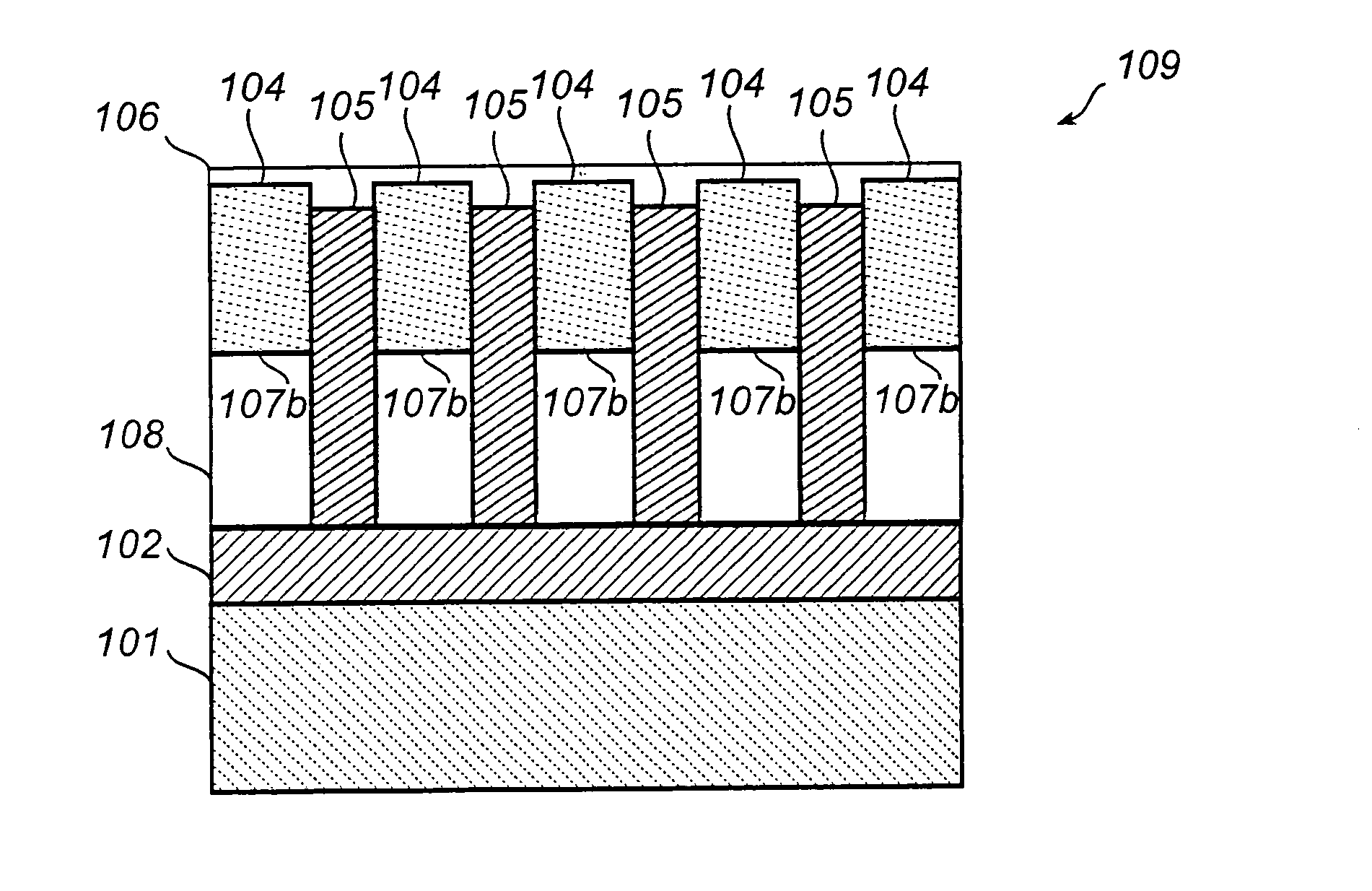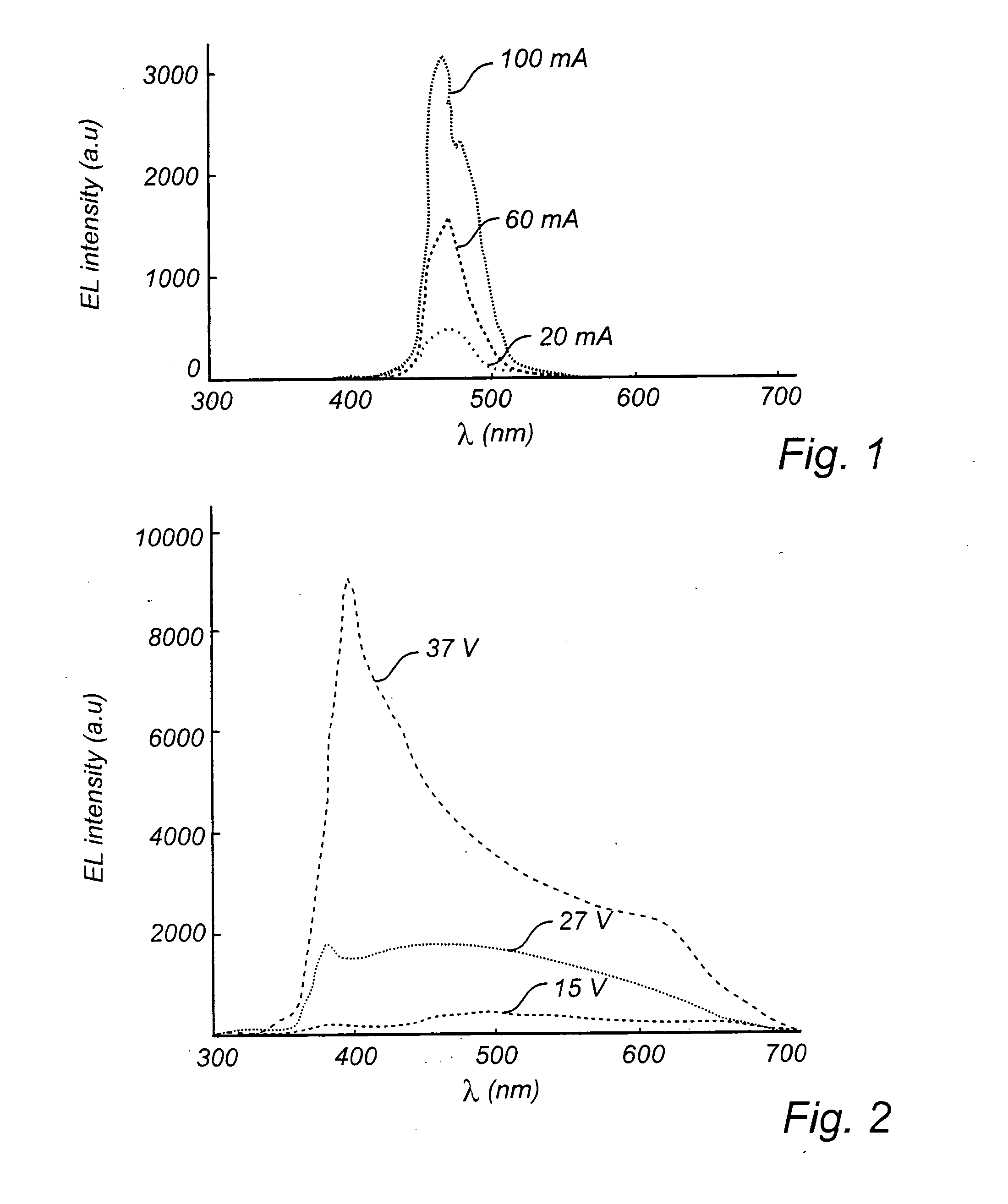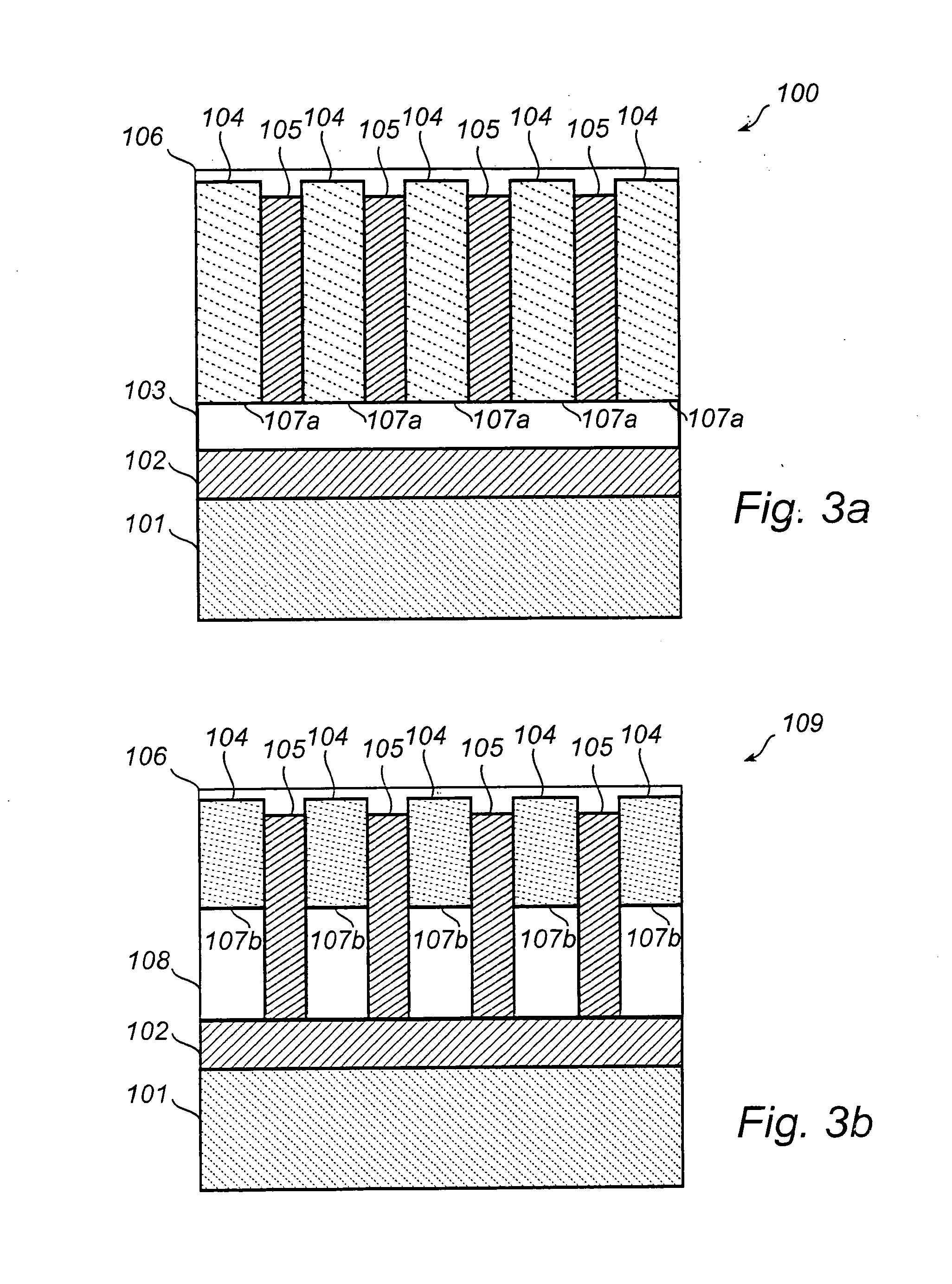Light Emitting Diode and Method for Manufacturing the Same
a technology of light-emitting diodes and manufacturing methods, which is applied in the direction of solid-state devices, nanotechnology, electric devices, etc., can solve the problems of complicated and expensive manufacturing steps of modifying the light-emitting diodes to obtain white light, and achieve the effects of reducing dimensionality on both sides, maximizing transmittance, and enhancing recombination ra
- Summary
- Abstract
- Description
- Claims
- Application Information
AI Technical Summary
Benefits of technology
Problems solved by technology
Method used
Image
Examples
Embodiment Construction
[0028]FIG. 2 is a graph showing the EL (electroluminescence) spectrum of the LED according to an embodiment of the present invention, when a voltage of 15 V, 27 V and 37 V is applied thereto. As can be seen in the graph, the LED according to this embodiment provides a broadband spectral distribution, having a characteristic band edge emission at about 380 nm. The LED according to the present invention provides for a higher brightness in comparison to the prior art GaN LED shown in FIG. 1.
[0029]In FIG. 3a, a currently preferred embodiment of the present invention is shown. A schematic side view illustrates a section of a light-emitting diode (LED) 100 comprising a metallic contact 102 sandwiched between a substrate 101, such as a substrate made of sapphire, and a p-doped layer 103. A plurality of ZnO-nanowires 104 are arranged onto the p-doped layer 103, forming a plurality of p-n junctions 107a. A transparent insulating structure 105 is arranged-among the plurality of ZnO-nanowires ...
PUM
 Login to View More
Login to View More Abstract
Description
Claims
Application Information
 Login to View More
Login to View More - R&D
- Intellectual Property
- Life Sciences
- Materials
- Tech Scout
- Unparalleled Data Quality
- Higher Quality Content
- 60% Fewer Hallucinations
Browse by: Latest US Patents, China's latest patents, Technical Efficacy Thesaurus, Application Domain, Technology Topic, Popular Technical Reports.
© 2025 PatSnap. All rights reserved.Legal|Privacy policy|Modern Slavery Act Transparency Statement|Sitemap|About US| Contact US: help@patsnap.com



